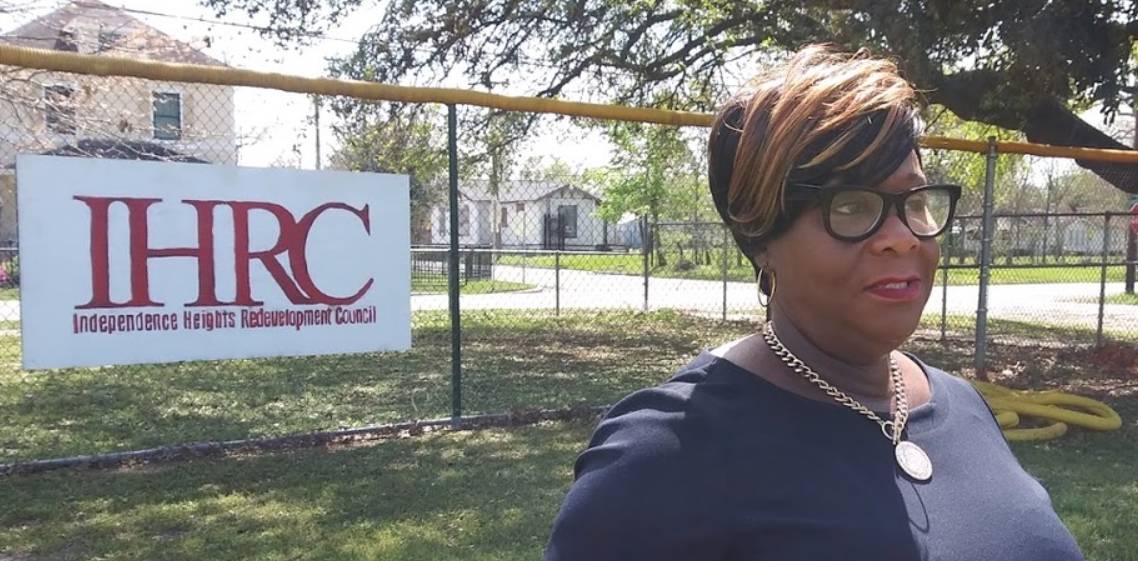Infrastructure has been used for decades to create barriers and establish unspoken division lines in communities of color across America. The community of Independence Heights was established around 1905 when the Wright Land Company began dividing the land to create a small community. During a time of segregation and Jim Crow laws, blacks were not encouraged to own land. However, the Wright Land Company positioned itself to sell land to blacks at a reasonable rate. Soon the area located just northwest of downtown Houston became home to some 600 residents. By 1915, the residents of the area in search of infrastructure and other amenities established their own city charter and became the first black municipality in the State of Texas.
The story of Independence Heights is just one narrative representing many places across the nation of how the black population settled into communities and spaces, creating enclaves of homes and self-sufficient communities reflective of a way of life. Fast forward into the 1950s, a time when Houston was growing, and the small town of Independence Heights had already been annexed in 1929 into the city. Black property owners along the present-day 610 Loop were being considered in a plan to build a new freeway that would be used to help transport people into more suburban areas. Independence Heights deemed in the pathway of construction, and by 1959 610 Loop wiped out more than 250 homes in Independence Heights.
The use of freeways in the early development of most major cities was deliberately divisive and was used to draw ‘invisible’ boundary lines separating populations of people based on race and class. In fact, these dividing lines helped to also proliferate decades of discriminatory policies and restrictive covenants rooted in racism, which still exist today.
In 2017, residents of Independence Heights, Acres Home, Fifth Ward and other communities of color began receiving notification of the I-45 project, an expansion which would double the capacity of lanes on the road to accommodate more cars. Already, many of these communities are undergoing changes because of gentrification and the devastating effects of flooding in the area. Neighborhoods like Independence Heights were already threatened with clusters of residential home buyouts, including 163 homes just west of the proposed I-45 project.
For Independence Heights, this meant something bigger than cars and roads – it is the downright displacement of its people of color. Furthermore, it breaks up a community where people coexisted together to create a unique and distinctive cultural and social fabric for years.
Other looming threats attributable to the proposed I-45 project’s pathway are the destruction of churches, family homes and the depopulation of area schools. To complicate the problem, displaced families have limited options for finding places to move within the city limits, as housing prices and rental rates are significantly higher than what their homes are currently appraised.
The loss of cultural and social infrastructure is not something generally perceived as a valuable, until "grandmother" is forced to move miles away from the grandchildren she helps daily to raise and nurture. From picking up kids from school to cooking meals while parents work full-time jobs, these cultural norms are threatened and the cohesiveness of community is devalued. Throughout many communities of color exist historic spaces, where early settlers established schools and churches used as gathering spaces for years. In the building of freeways, historic and cultural assets akin to communities of color are often overlooked and therefore unpreserved.
While the I-45 expansion appears to be inevitable, communities of color have banned together to address the onslaught of disruption this project will bring to their neighborhoods. Across boundaries, community leaders are focusing on ways to lessen the impacts of displacement and the losses of cultural and historical assets. Independence Heights is listed on the National Register of Historic Places and possesses many landmarks, including historic homes such as the home located at 301 E. 35th. These are indicators of a very real, authentic story of how the black community helped settle America. If we are not careful, before long the continued devaluation of property, forced displacement of people, massive flood events, and the expansion of freeways, railroads and transportation routes through communities of color will erase the culture of these unique places – thereby creating a one-sided city no longer reflective of Houston's diversity.
Tanya Debose is the executive director of Independence Heights Redevelopment Council. The opinions expressed in this commentary are her own.

